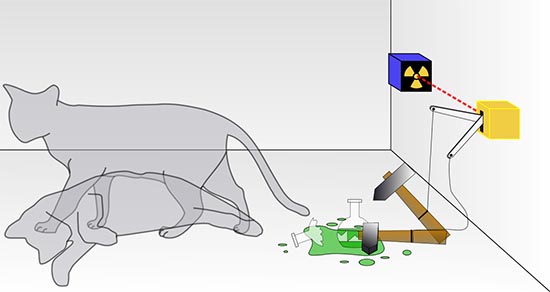

Schrodinger's Cat is a thought experiment, sometimes described as a paradox, devised by Austrian physicist Erwin Schrodinger in 1935. It illustrates what he saw as the problem of the Copenhagen interpretation of quantum mechanics applied to everyday objects. The scenario presents a cat that is randomly put in a state where alive and dead are both possibilities, requiring further observation to determine which. The thought experiment is also often featured in theoretical discussions of the interpretations of quantum mechanics. In the course of developing this experiment, Schrodinger coined the term Verschrankung (entanglement). Read more ...
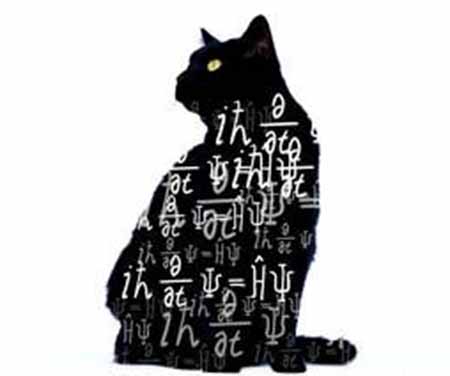
Schrodinger's Cat is neither alive nor dead.
It is a projection in the Simulation/Hologram/Algorithm of Reality - a thought (experiment) - just as we are.
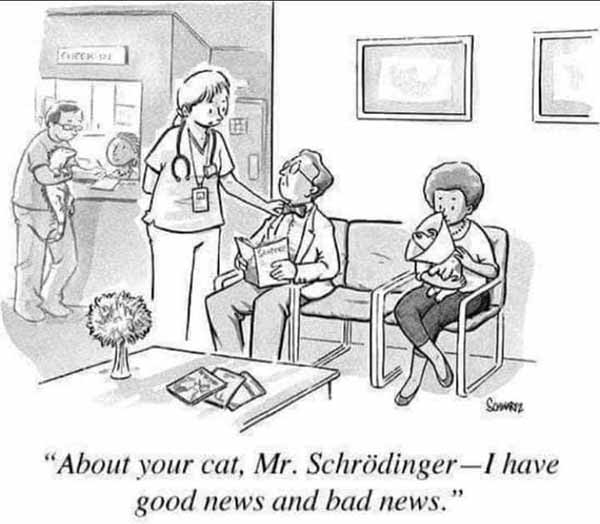
Schrodinger's Cat breakthrough could usher in the 'Holy Grail' of quantum computing, making them error-proof Live Science - January 18, 2025

The new method encodes quantum information onto an antimony atom, which has eight possible states that enable data to be more safely stored than in a standard two-state qubit, or quantum bit.
Quantum engineers create a Schrodinger's cat inside a silicon chip PhysOrg - January 14, 2025
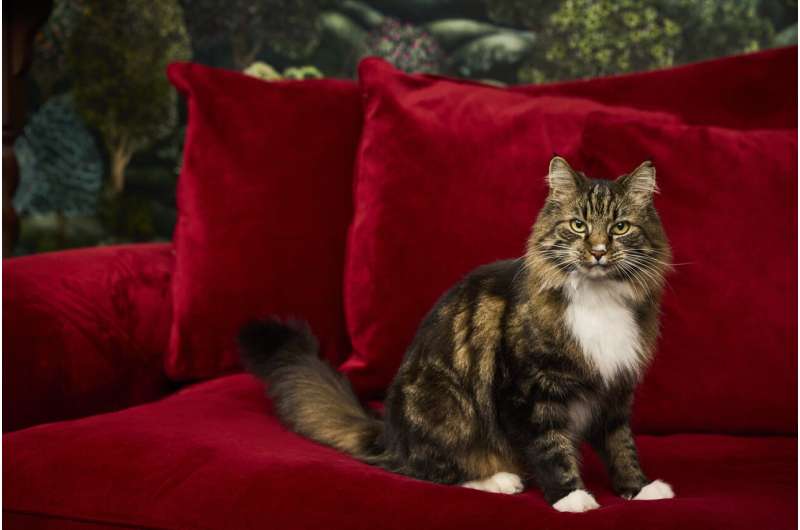
UNSW engineers have demonstrated a well-known quantum thought experiment in the real world. Their findings deliver a new and more robust way to perform quantum computations - and they have important implications for error correction, one of the biggest obstacles standing between them and a working quantum computer.
New Theory Solves Paradox of Schrodinger's Cat by Claiming We're in a Multiverse Science Alert - January 3, 2025

Theoretical physicists from the Autonomous University of Barcelona in Spain think they might at last have an explanation for why Schrodinger's cat would always appear in a single state once it's observed. Their proposal rests largely on the assumption that every possibility of a quantum system constitutes a universe itself, a concept known as the many-worlds theory.
Quantum Cat Experiment Breaks Record By Surviving For Incredible 1,400 Seconds IFL Science - October 30, 2024
In the famous Schrodinger's cat thought experiment, we see a cat closed in a box with a poison activated by a random quantum process. Without opening the box we cannot ascertain the state of the cat, so it is both alive and dead, two contradictory states in the non-quantum reality we experience. In the quantum world, quantum cat states are superpositions where a quantum state can exist in several ways at once, although it's impossible to tell which one it really is so it's effectively all of them at once. In the new experiment, it is the length of this quantum cat state that is astounding. In nature, the superposition will collapse into one or the other in a fraction of a second, but here it persisted for 1,400 seconds. The team thinks that with a better vacuum system, it can be made to last even longer.
Tweak to Schrodinger's cat equation could unite Einstein's relativity and quantum mechanics, study hints Live Science - April 26, 2024
In their tweaked version of quantum physics, the researchers eliminated the distinction between objects subject to measurement and measuring devices. Instead, they proposed that each system's state undergoes spontaneous collapse at regular intervals, leading to the acquisition of definite values for some of their attributes.
Physicists Set New Quantum Record With Heaviest 'Schrodinger Cat' Yet Science Alert - May 1, 2023
A tiny vibrating crystal weighing little more than a grain of sand has become the heaviest object ever to be recorded in a superposition of locations. Physicists at the Swiss Federal Institute of Technology coupled a mechanical resonator to a type of superconducting circuit commonly used in quantum computing to effectively replicate Erwin Schrodinger's famous thought experiment on an unprecedented scale.
Physicists Create the Fattest Schrodinger's Cat Ever Gizmodo - April 23, 2023

The new research takes Schrodinger's famous thought experiment and gives it some practical applications. Controlling quantum materials in superposition could be useful in a number of fields that require very precise measurements; for example, helping reduce noise in the interferometers that measure gravitational waves.
Centuries-old 'impossible' math problem cracked using the strange physics of Schrodinger's cat Live Science - January 20, 2022
A math problem developed 243 years ago can be solved only by using quantum entanglement, new research finds. The mathematics problem is a bit like Sudoku on steroids. It's called Euler's officer problem, after Leonhard Euler, the mathematician who first proposed it in 1779. Here's the puzzle: You're commanding an army with six regiments. Each regiment contains six different officers of six different ranks. Can you arrange them in a 6-by-6 square without repeating a rank or regiment in any given row or column? Euler couldn't find such an arrangement, and later computations proved that there was no solution. In fact, a paper published in 1960 in the Canadian Journal of Mathematics used the newfound power of computers to show that 6 was the one number over 2 where no such arrangement existed.
Could Schrodinger's cat exist in real life? Our research may soon provide the answer PhysOrg - October 16, 2020
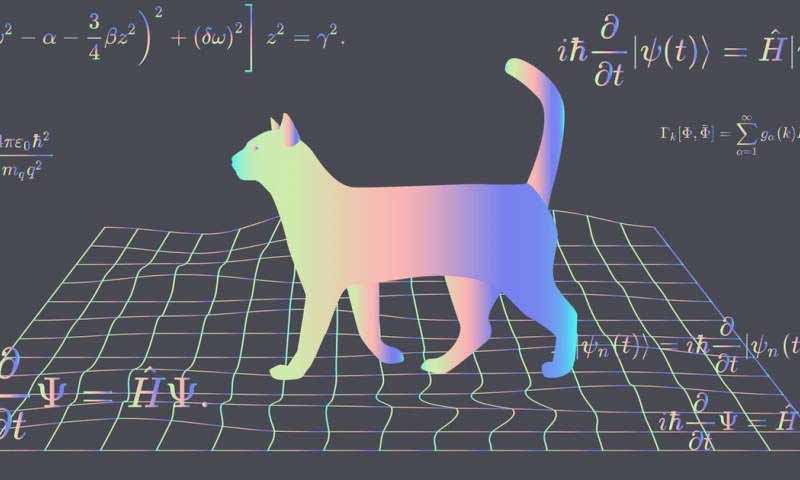
Have you ever been in more than one place at the same time? If you're much bigger than an atom, the answer will be no. But atoms and particles are governed by the rules of quantum mechanics, in which several different possible situations can coexist at once. Quantum systems are ruled by what's called a "wave function": a mathematical object that describes the probabilities of these different possible situations. And these different possibilities can coexist in the wave function as what is called a "superposition" of different states. For example, a particle existing in several different places at once is what we call "spatial superposition".
Physicists Can Finally Peek at Schrdinger's Cat Without Killing It Forever Live Science - November 7, 2019
There may be a way of sneaking a peak at Schrdinger's cat - the famous feline-based thought experiment that describes the mysterious behavior of subatomic particles - without permanently killing the (hypothetical) animal. The unlucky, imaginary cat is simultaneously alive and dead inside a box, or exists in a superposition of "dead" and "alive" states, just as subatomic particles exist in a superposition of many states at once. But looking inside the box changes the state of the cat, which then becomes either alive or dead. Now, however, a study describes a way to potentially peek at the cat without forcing it to live or die. In doing so, it advances scientists' understanding of one of the most fundamental paradoxes in physics.
Researchers have figured out how to catch and save Schrodinger's famous cat, the symbol of quantum superposition and unpredictability, by anticipating its jumps and acting in real time to save it from proverbial doom Science Daily - June 3, 2019
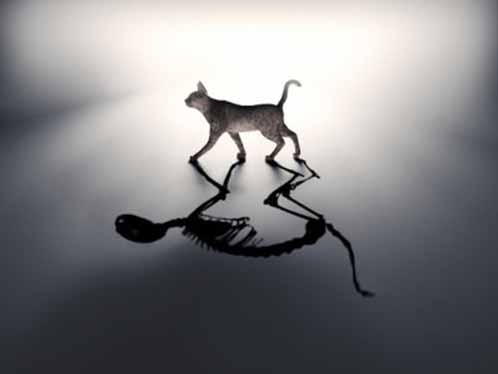
In the process, they overturn years of cornerstone dogma in quantum physics. The discovery enables researchers to set up an early warning system for imminent jumps of artificial atoms containing quantum information.
Physicists Made a Flying Army of Laser Schrodinger's Cats PhysOrg - January 29, 2019
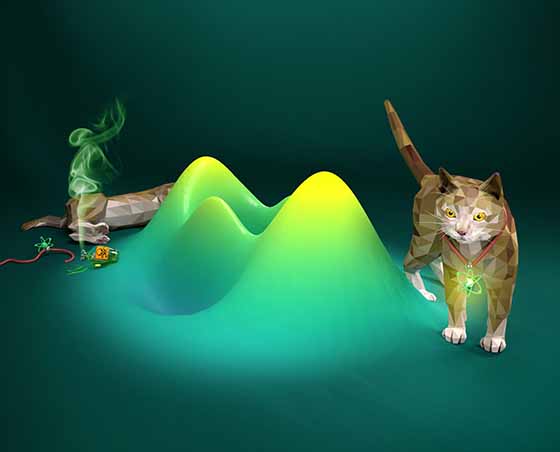
A laser pulse bounced off a rubidium atom and entered the quantum world - taking on the weird physics of "Schrodinger's Cat." Then another one did the same thing. Then another. The laser pulses didn't grow whiskers or paws. But they became like the famous quantum-physics thought experiment Schrodinger's cat in an important way: They were large objects that acted like the simultaneously dead-and-alive creatures of subatomic physics - existing in a limbo between two simultaneous, contradictory states. And the lab in Finland where they were born had no limit on how many they could make. Pulse after pulse turned into a creature of the quantum world. And those "quantum cats," though they existed for only a fraction of a second inside the experimental machine, had the potential to be immortal.
How the quantum Zeno effect impacts Schroedinger's cat PhysOrg - June 19, 2017
You've probably heard about Schrodinger's cat, which famously is trapped in a box with a mechanism that is activated if a radioactive atom decays, releasing radiation. The act of looking in the box collapses the atom's wave function - the mathematical description of its state - from a "superposition" of states to a definite state, which either kills the cat or let's it live another day. But did you know that if you peek into the cat box frequently - thousands of times a second - you can either delay the fateful choice or, conversely, accelerate it? The delay is known as the quantum Zeno effect and the acceleration as the quantum anti-Zeno effect.
'Dead or alive' cat in physics top 10 BBC - December 13, 2016
The detection of ripples in space-time and a famous cat-based paradox are featured in a list of the physics advances of 2016. The discovery of gravitational waves, announced in February, was declared breakthrough of the year. But the top 10 list, compiled by Physics World magazine, also features a new twist on the much-loved Schrodinger's Cat paradox. It also included the detection of a planet around our nearest star. The winning discovery was the result of work by the Ligo collaboration, which involved more than 80 institutions worldwide.
'Schroedinger's cat' molecules give rise to exquisitely detailed movies BBC - September 21, 2016
One of the most famous mind-twisters of the quantum world is the thought experiment known as "Schroedinger's Cat," in which a cat placed in a box and potentially exposed to poison is simultaneously dead and alive until someone opens the box and peeks inside.
Doubling down on Schrodinger's cat PhysOrg - May 26, 2016
Yale physicists have given Schrodinger's famous cat a second box to play in, and the result may help further the quest for reliable quantum computing. Schrdinger's cat is a well-known paradox that applies the concept of superposition in quantum physics to objects encountered in everyday life. The idea is that a cat is placed in a sealed box with a radioactive source and a poison that will be triggered if an atom of the radioactive substance decays. Quantum physics suggests that the cat is both alive and dead (a superposition of states), until someone opens the box and, in doing so, changes the quantum state. This hypothetical experiment, envisioned by one of the founding fathers of quantum mechanics in 1935, has found vivid analogies in laboratories in recent years. Scientists can now place a wave-packet of light composed of hundreds of particles simultaneously in two distinctly different states. Each state corresponds to an ordinary (classical) form of light abundant in nature.
Quantum Cheshire Cat effect may be explained by standard quantum mechanics PhysOrg - June 13, 2015
"A grin without a cat" is how Lewis Carroll describes the Cheshire Cat's mysterious way of disappearing while leaving its grin behind in his 1865 classic, Alice in Wonderland. The fanciful character raises a question that has captured physicists' attention over the past few years: can an object be separated from its properties? However, in a new paper published in the New Journal of Physics has questioned this interpretation of the results. Instead of a particle being separated from its properties, they suggest that the results can be explained by a standard quantum effect, quantum interference, in which an individual particle interferes with itself due to its wave-like properties.
Schrodinger's cat gets a reality check PhysOrg - February 12, 2015
It's a century-old debate: what is the meaning of the wave function, the central object of quantum mechanics? Is Schrdinger's cat really dead and alive? Physicist Erwin Schrdinger's famous thought experiment was designed to show how, if quantum mechanics is taken literally and to its ultimate implications, even macroscopic systems, like cats, would be in such "superpositions" of states - such as the cat being both dead and alive - which is an apparently absurd conclusion.
Researchers describe the wave-function of Schroedinger's cat PhysOrg - February 3, 2015
Schrodinger's cat highlights a long-standing dilemma in quantum mechanics: is the cat really alive and dead, or is the weirdness just in our head? Researchers at The University of Queensland have now made major progress in answering this question. Using four-dimensional states of photons, and subjecting them to very precise measurements, they ruled out the popular view that describing the cat as dead and alive is just due to a lack of knowledge about its real state. As with all objects in quantum physics, the cat is described by the quantum wave-function. Schrodinger's cat really is in a state of being both alive and dead.
Schrodinger's Cat Comes into View with Strange Physics Live Science - August 27, 2014
The cats represent the famous Schrodinger cat paradox, in which a quantum cat closed in a box can be dead and alive at the same time. The dark and light cat body outlines are images of an etched piece of silicon. They arise due to destructive and constructive quantum interference, respectively. In this experiment the photons that interact with the silicon are not detected, while the images are obtained by detecting only photons that never interact with the object. By sending green, red and yellow laser beams down a path to detector, researchers have shed light on the famous physics idea known as the Schrodinger's cat thought experiment. For physicists, Schrodinger's cat involves picturing a cat, in a box, with a vial of poison that can kill the cat if it opens. Over any given period there's a 50-50 chance the poison vial will open, and a person who opens the box after a given time and looks at the cat will then observe that it is either dead or alive. Most people would say that even before you open the box, before you can see the cat, it's still in either one state or the other, either dead or alive.
Bizarre 'Schrodinger's Cat' Comes Alive in New Experiments Yahoo - July 22, 2013
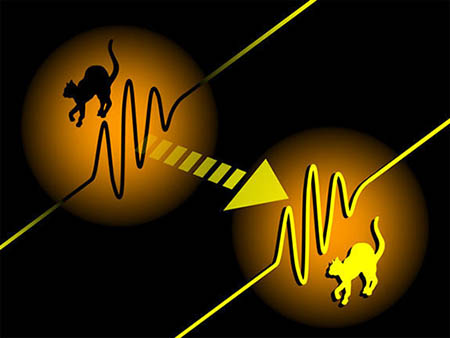
The strangeness of the world of the very small that allows a particle to be in two states at once may extend to larger scales, two new studies reveal. If the research proves true, that would bolster the validity of a thought experiment suggesting a cat can be both alive and dead at the same time. The idea, called Schrodinger's Cat after the physicist, Erwin Schrodinger, who proposed it in 1935, goes like this: Put a cat in a box with a vial of poison gas. The vial opens when a tiny piece of radioactive metal emits an alpha particle (the nucleus of a helium atom) as it decays. Emitting an alpha particle is a quantum-mechanical process, which means that whether it happens in any given stretch of time is basically random. Quantum mechanics says that it's impossible to know whether the radioactive decay has happened (and the cat is dead) unless one measures it - that is, unless the alpha particle interacts with the environment in some way that an observer can see. Until that happens, the alpha particle is emitted and not emitted at the same time. The cat is both dead and alive, a state called superposition. Opening the box is a measurement - one sees the effect of an alpha particle as the dead cat, or the absence of an alpha particle as a live one.